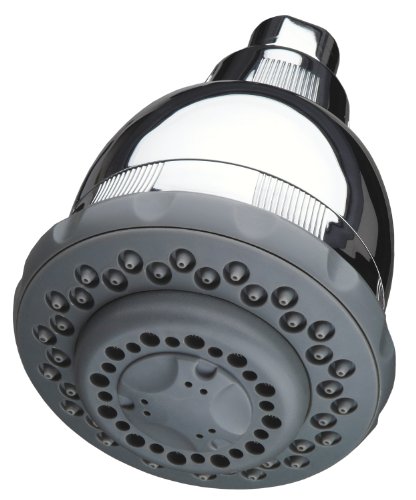Recently by Mark Sisson: Vitamin D: Sun Exposure, Supplementation andDoses
Last week’s New York Times featured an article about a Dr. Jeremijenko, not a physician but an engineer who offered clients tips for making their personal environments healthier, more naturally pleasing, and more environmentally friendly. Dr. Jeremijenko’s suggestions ranged from planting sunflowers and EDTA soil supplements to leach harmful lead in yards to surrounding yourself with more houseplants for both their aesthetic value and healthy ability to absorb toxic VOCs in the air. She even offers clients reports on the “top polluters in their neighborhoods” and other information on environmental concerns relevant to their areas.
 Culligan WSH-C125 Wall...
Best Price: $17.30
Buy New $31.31
(as of 09:40 UTC - Details)
Culligan WSH-C125 Wall...
Best Price: $17.30
Buy New $31.31
(as of 09:40 UTC - Details)
The good doctor’s story got us thinking. We all chat quite a bit about the best diet, the ideal exercise routine, even effective sleep strategies. Yet, our personal environment, we’ve said, includes a great deal we have little to no control over: air pollution, water impurity, and the chemical makeup of modern “stuff” – (i.e. chemicals included, some for good reason and others not so much, in the products we use every day). Wise supplementation (shamless plug) can help counter some of their effects, but what if we knew how to reduce toxic impact from the get-go?
The idea here is reducing our own biological “chemical load,” the number and amount of toxins we carry in our bodies. This includes everything from heavy metals like mercury, arsenic and lead to virtually omnipresent flame retardant compounds called PBDEs to chemicals like phthalates, formaldehyde, PCBs, and bisphenol A (just to name a few). These toxins are invaders, and the body knows it. Some, like the heavy metals, impact neurological functioning. Others, like phthalates, disrupt the endocrine balance. PBDEs, at lower levels, can seriously impact thyroid functioning (an issue for a number of our readers) and at higher levels, can impair reproductive and neurological functioning. In short, this issue is nothing to shake a stick at.
 Croscill Fabric Shower...
Buy New $12.99
(as of 05:40 UTC - Details)
Croscill Fabric Shower...
Buy New $12.99
(as of 05:40 UTC - Details)
Scientists in both the human health and environmental sciences are learning from the growing use of biomonitoring surveys, in which blood and urine samples from humans (and animals) are tested for the presence of certain toxins. A person’s chemical load is, in part, determined by where they live and how old they are, but it’s also strongly influenced by what kind of lifestyle they lead and the measures they take to minimize their exposure to environmental and consumer toxins in their home and work places.
We’re all about taking charge of our health and well-being, we thought. “So,” we asked, “What are some easy and inexpensive ways for all of us to reduce our chemical load?” Check it out.
Clean up Your Shower
Got chlorine in your water? Most likely, since it’s commonly used in municipal water treatment programs. Once that chlorine comes out in the fine, hot spray of your morning shower, there’s concern about breathing it in day after day. Quick fix? Buy a simple shower filter, which usually go for about $30-45.
And while you’re at it, you might want to take a look at ye olde shower curtain as well. We suggest getting rid of a vinyl (PVC) curtain, which contains phthalates that can be absorbed by the skin. Again, if you’re purely a bath person, you probably don’t have much to worry about. However, if you are a shower lover, that aforementioned hot water can allegedly help release phthalates into your otherwise soothing shower experience. Simple solution? Choose a nylon, linen, or PEVA plastic. They come as cheap as $4.
Use Natural Fabrics





